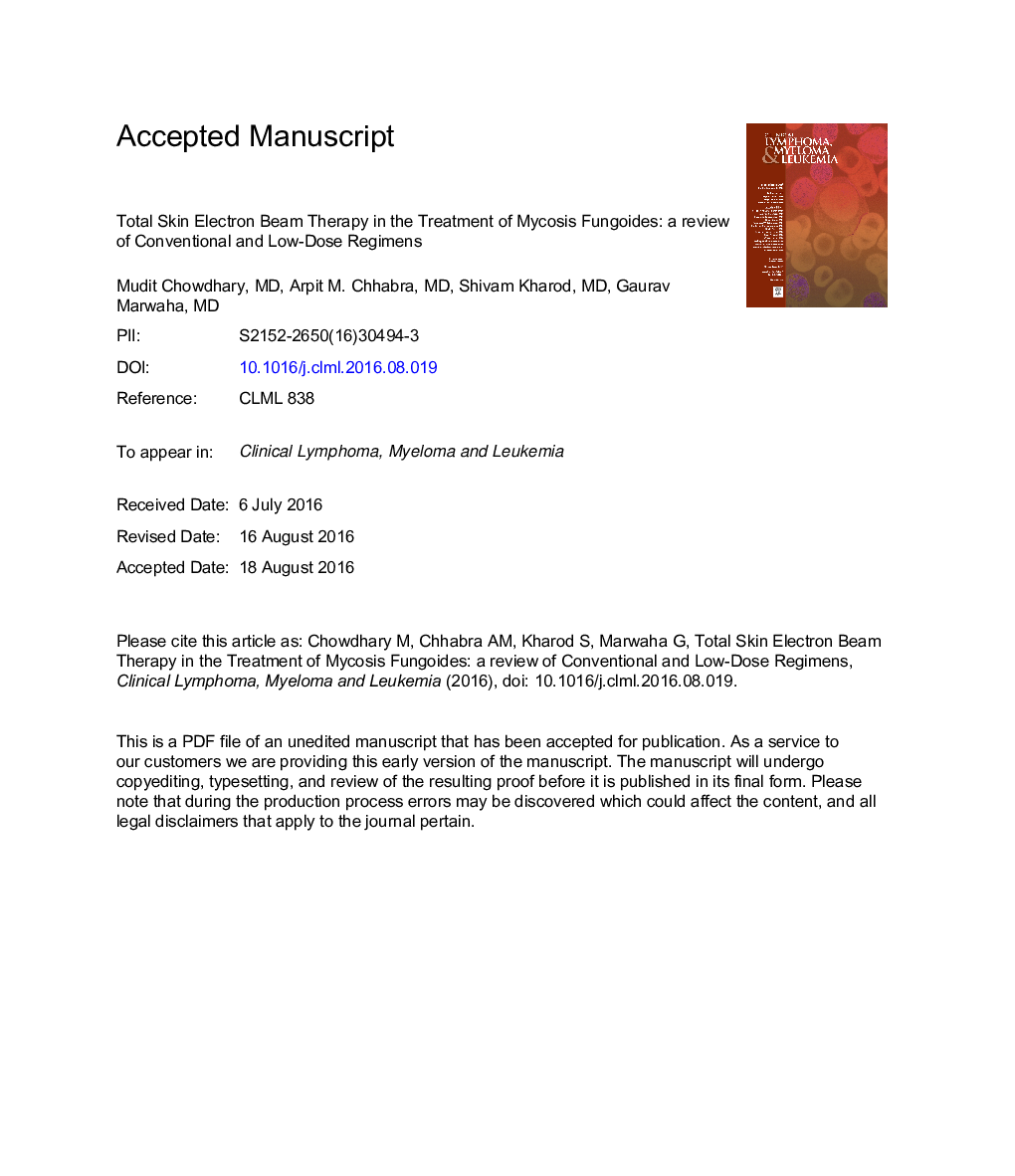| Article ID | Journal | Published Year | Pages | File Type |
|---|---|---|---|---|
| 5581677 | Clinical Lymphoma Myeloma and Leukemia | 2016 | 32 Pages |
Abstract
Mycosis fungoides (MF) is the most prevalent subtype of cutaneous T-cell lymphoma, which is characterized by the proliferation of CD4+ T cells. While often an indolent disease, most patients eventually develop progression from isolated patches to tumors and finally nodal or visceral involvement. Treatment choice is largely based on disease burden, though prognostic factors such as disease stage, patient age, and extracutaneous involvement must be taken into consideration. Radiotherapy represents one of the most effective therapeutic modalities in the treatment of MF. Lymphocytes are exquisitely radiosensitive, and excellent responses are observed even with low doses of radiation. Total skin electron beam therapy (TSEBT) is a special technique that allows for the homogenous irradiation of the entire skin. There are well-documented radiation dose-response relationships for achieving a complete response. As such, TSEBT doses ⥠30 Gy comprise the current standard of care. Although highly effective, most patients experience recurrent disease even after conventional-dose (⥠30 Gy) TSEBT. In addition, toxicity is cumulatively dose dependent, and there is reluctance to administer multiple courses of conventional-dose TSEBT. Consequently, there has been renewed interest in determining the utility of TSEBT at lower total (⤠30 Gy) doses. Advantages of low-total-dose (with standard dose per fraction) TSEBT include a shortened treatment course, the potential to minimize the risk of adverse events, and the opportunity to allow for retreatment in cases of disease recurrence. This comprehensive review compares the impact of different TSEBT dosing schemes on clinical outcomes of MF.
Related Topics
Health Sciences
Medicine and Dentistry
Anesthesiology and Pain Medicine
Authors
Mudit Chowdhary, Arpit M. Chhabra, Shivam Kharod, Gaurav Marwaha,
